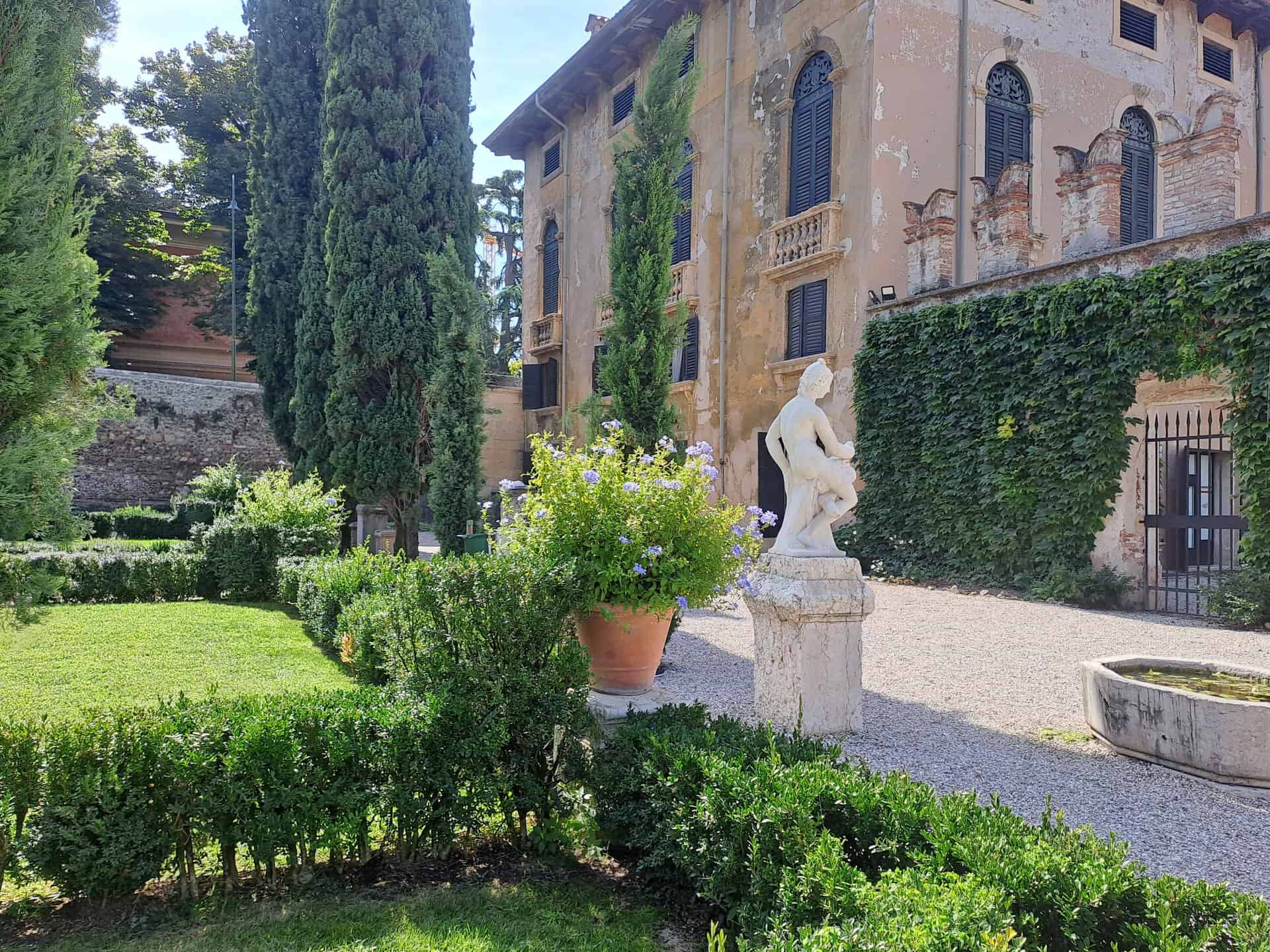The Veronese Renaissance itinerary explores the historical and artistic period from the second half of the 1400s to the first half of the 1500s, a time when Verona was under the rule of the Republic of Venice.
The guided tour begins inside the Basilica of San Zeno, where the famous triptych by Andrea Mantegna, the artist who brought the Renaissance to Verona, is preserved.
Along the Adige river towards Castelvecchio
From the Basilica, a short walk along the Adige river leads to Castelvecchio and the beginning of Corso Cavour.
Continuing to Piazza Erbe, you will walk along a stretch of the ancient Via Postumia, the road axis along which the most important noble families of Verona built their splendid residences.
Palazzo Canossa and Palazzo Bevilacqua
The first Renaissance building we encounter is Palazzo Canossa, a building that already features Mannerist elements, an artistic current that developed between the Renaissance and the Baroque.
The itinerary continues to Palazzo Bevilacqua, built in 1530. Its façade is enriched with decorative elements inspired by Roman art, connecting to the same references already seen in the triptych by Mantegna.
Piazza Erbe and the Loggia del Consiglio
Once in Piazza Erbe, you can admire the famous Case Mazzanti, frescoed around 1540 by Alberto Cavalli, a pupil of Giulio Romano, the architect of the Gonzaga family in Mantua.
In the nearby Piazza dei Signori is the Loggia del Consiglio, a building built to house the meetings of the city council.
- The Loggia occupies the space of an ancient Scaliger building.
- It is divided into two parts: the lower loggia, decorated with local marble, and the upper part, entirely frescoed with scenes from ancient history.
- On the top of the building, the statues of Vitruvius, Catullus, Pliny, Macro, and Cornelius Nepos stand out.
The Cathedral and the Assumption by Titian
The Veronese Renaissance itinerary continues towards the Verona Cathedral, where the Assumption by Titian Vecellio is preserved.
Inside the Cathedral, there are also artistic interventions by Giovanni Maria Falconetto, a painter trained in Rome and active in Verona.
Santa Maria in Organo and San Giorgio in Braida
If you have a full day, you can continue your visit to the Church of Santa Maria in Organo, famous for the extraordinary wooden inlays by Fra Giovanni, a masterpiece of inlay art.
The itinerary ends at the Church of San Giorgio in Braida, which houses the painting "The Martyrdom of San Giorgio" by Paolo Caliari, known as Veronese, on the high altar.







